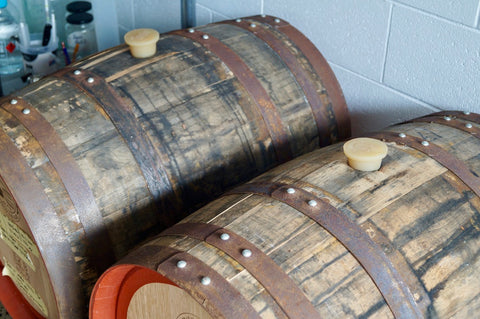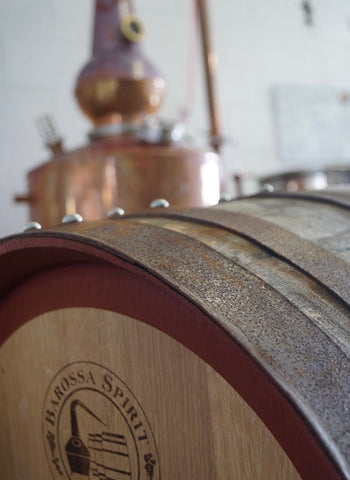Barrels in time: from Babylon to Cabarita
Batches 8, 9, 10 and 11 have been put to excellent use in filling Soltera Rum's first barrel acquisition: two ex-bourbon American oak casks. All spirits, including whiskey, rum and brandy, come off the still as transparent as water. It's the tannins in oak that impart the golden colour we're familiar with.

Wooden barrels, also known as casks, have been used to transport goods for thousands of years, but the practice of using them to age spirits evolved quite by accident. Like all good stories, it starts with a glass of wine.
Palm-wood casks were first described by the Greek historian Herodotus for their usefulness in shipping wine along the Euphrates River to Babylon in Mesopotamia; they were lighter and less breakable than clay amphorae. The barrel as we know it today, bound together with metal hoops, was most likely developed by the Celts around a hundred years later in 350BC; they transported goods including beer, nails and gold coins.
It was the Romans who recognised a good idea and improved it by introducing oak, a superior wood fit for purpose: the oak tree is fast-growing, its wood is stronger, lighter, more flexible for barrel-making and it has a tighter grain to prevent leakage. Oak also happens to boast anti-fungal and anti-microbial properties, which enables storing consumables for longer periods without spoilage.
In time, winemakers discovered that beyond storage and shipping, wine in oak barrels took on properties of the wood, extracting tannins and flavours, making it softer, smoother and sometimes better-tasting.
Spirits only entered the scene in the mid 16th Century in Cognac, France, when winemakers began distilling their light white wine. They put this brandy into oak barriques, small barrels they'd previously used for shipping Bordeaux wines, and floated them on barges down the Charente River to the Bay of Biscay and the ports of Tonnay-Charente and La Rochelle, where they continued their journey to Amsterdam and London.
Word got around and a few years later on the other side of the world, rum was sloshing around in casks being shipped across the Atlantic from the Caribbean to Europe.
For the most part, people continued to imbibe their spirits un-aged. Ageing spirits in oak only became common practice with the decline of the wooden ship building industry in the mid 19th Century - then there was an abundance of oak on the market.
Over the last century or so, the vast majority of aged rums around the world are matured in ex-bourbon barrels due to their plentiful supply coming from the American bourbon industry. According to US law, bourbon must be aged in new oak barrels and once emptied, can not be refilled. It's a great opportunity for us rum makers, as these barrels impart sweet vanillins without overpowering the spirit with an over-abundance of oak.

There is opportunity in Australia to utilise other oak barrels though, from the prolific winemaking industry. Ex-shiraz and chardonnay barrels are already being used by craft distillers and will no doubt also play a role in the future of Soltera Rum.
But for now, Soltera Rum's first two barrels are ex-bourbon American oak (Quercus alba). Originally 200 litres each, they've been re-coopered down to 120 litres. This gives the spirit more surface area with which to react and therefore increases the rate of maturation. Our sub-tropical climate also aides this.
Both barrels have been full for a few months and the spirit within is already taking on the golden hues and woody, complex profile of an aged rum. I must say, delicious!
More to come in the next blog on the magical maturation process.
In Australia, under the 1901 Excise Act, to be legally defined as "rum", spirit must be stored in wood for a minimum of two years.
